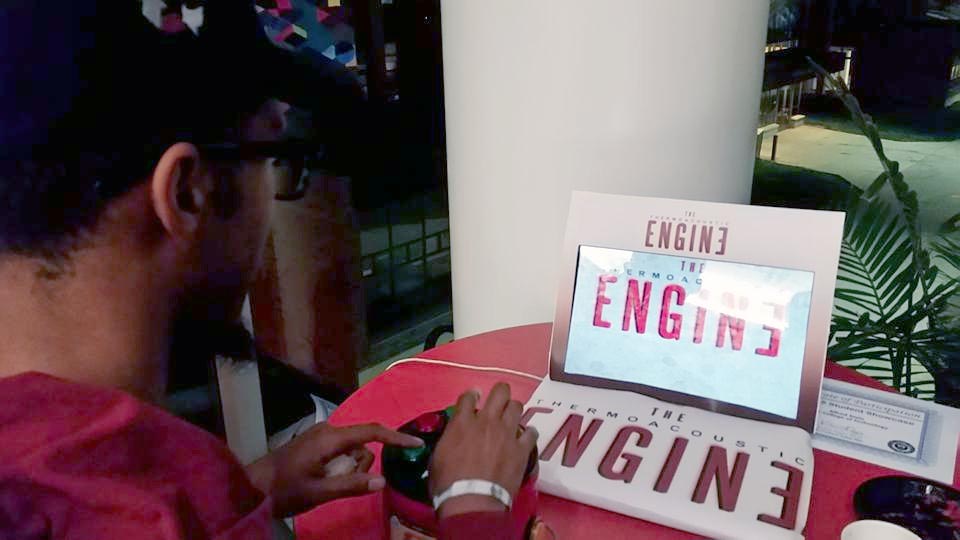Thermoacoustic Engine Video Game Installation Piece
In conjunction with the engineering department, the Digital Media students were to create interactive projects to augment the engineers’ presentations on the thermodynamics.
Our group’s concept was based around a specific study on engines. As a group, we had to brainstorm how we could adapt the intricacies of the engine(s) into a game. With our first drafts, we realized our concepts were too concrete and depended on our understanding of the engines. The potential for gameplay was greatly limited and it didn’t cater to our strengths as artists and designers.
Our final concept was inspired correspondence with one of the engineers, who provided a helpful piece on the thermoacoustic engine. With a simplified concept of how the engine worked, we went about making a more conventional game that took cues from the engine designs.
Abstracting the concept down to its simplest form; the engine centers around moving heat from one section of the engine to another through sound. Our design portrays “heat” as the main character, and heat is what gives him movement. Due to the arcade-style nature of the game, it consisted of one side-scrolling level. With increasing difficulty, the game is easy to pick up in concept, but difficult to complete.
The design and presentation of the game was equally important. Early on, I drafted various designs for what our game could look like on different platforms, ranging from smartphones to tablets to our standard Macbooks. We decided the Macbook provided a good balance when it came to display; not too large for our space, but large enough to capture attention.
My first goal with design was setting it apart from the Macbook, and having that not be easily recognizable. With the target audience in mind, I designed with an arcade machine in mind; in a crowded space, bright and colorful arcade cabinets were designed to catch players’ attentions. Directly based on this, and in conjunction with the game programmer’s designs, I created a marquee and border for the screen, as well as a design that covers the bottom portion of the laptop.
We decided against keyboard controls, which could cause a variety of problems. To create an ideal external controller, we simply repurposed a custom Arduino-programmed controller. Complete with arcade-style buttons, the input worked well for the simple control scheme of the game.
For the presentation during the installation, our piece stood out well in its display area (even establishing a color scheme with the red table). The game’s control style was enticing to viewers, and the majority of players returned for additional rounds. Even details as simple as the animated title screen made for a pleasing aesthetic and a fun supplement to the engineers’ presentations.
